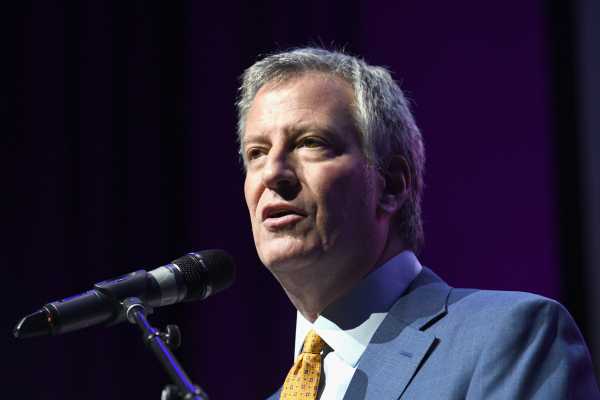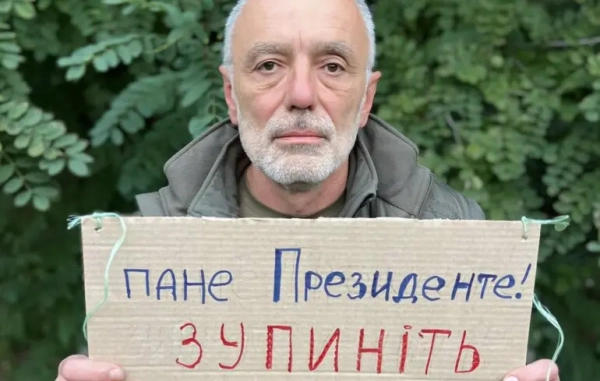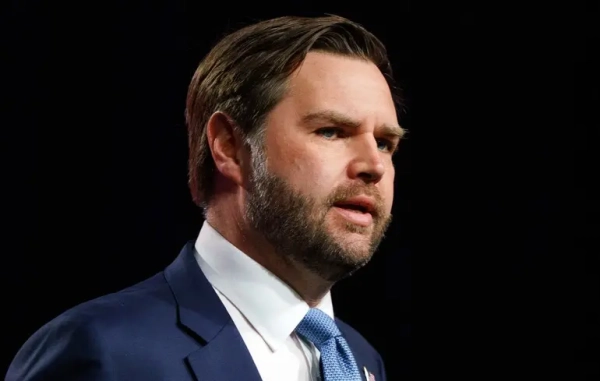
New York City Mayor Bill de Blasio has a plan to bring “universal health care” to America’s biggest city — and, though it’s not quite single payer, the initiative shows that Democratic politicians are getting more creative about what they can do to expand health care in the Trump era.
De Blasio rolled out a new plan this week that he says would guarantee that every New Yorker, regardless of their ability to pay, the ability to visit a doctor and get affordable medical treatment in the city’s historic public hospitals system.
“From this moment on in New York City everyone is guaranteed the right to health care,” the mayor said Tuesday. “We are saying the word guarantee because we can make it happen.”
For most New Yorkers, their insurance won’t change at all; they’ll get it through work, as well as Medicaid, Medicare, or the Affordable Care Act, like they always have. Instead, de Blasio’s wants to invest more money in the city’s safety net — an idea based on a successful predecessor in San Francisco — and it should help the people who don’t have insurance or a regular doctor get medical care. It’s also a necessary, though limited, fix to a long-running crisis for the city’s public hospital network.
The promise of “Medicare-for-all” is energizing Democratic voters, and health care was a top issue in the 2018 elections. Now de Blasio is one of several Democratic mayors, governors, and other politicians seeking to improve health care access even as Republicans in Washington control the White House and the Senate.
The plan is to get uninsured New Yorkers to primary care doctors
Through a program called NYC Care, any uninsured New Yorker is able to visit one of the hospital system’s 70 clinics and see a primary care physician. They will be charged on a sliding scale designed to keep care affordable. (We haven’t seen the specifics yet of who would pay how much.)
The program targets the city’s 600,000 uninsured residents; about half of them are undocumented immigrants, the rest are eligible for coverage but they’re not enrolled for one reason or another. The city is providing $100 million every year to help the hospitals cover the cost of treating those people and then launching an outreach campaign to make sure the people know coverage is available to them.
This is an aggressive branding campaign, in some sense — but one health advocates in the city say is desperately needed.
“People will hopefully know they have access to a primary care physician and can start there” rather than going to the emergency room, Katie Robbins, director of Campaign for New York Health, says.
Another key component of this will be to boost enrollment for MetroPlus, the city health insurance plan that’s available through Medicare, Medicaid, and the Obamacare exchanges and offers the public hospitals system — 70 clinics and 11 hospitals — as the plan’s provider network.
A hospital funding crisis motivated the new de Blasio health care plan
The impetus for the de Blasio plan is a much-needed funding infusion for New York City’s ailing public hospitals. There has been a longstanding New York City–New York state dispute over the state’s charity care formula for hospitals, which Robbins says is biased in favor of academic medical centers and against the public hospitals.
A 2017 report found that New York’s public hospitals provided 52 percent of the uncompensated care in the state, yet received just 15 percent of the state’s charity care dollars. Private hospitals, on the other hand, were responsible for 42 percent of that care and received 85 percent of the state money.
The paltry state funding has led to a budget crisis in NYC. Two years ago, the city budget office reported that the public hospitals were facing a $6 billion shortfall through 2020.
The $100 million per year in de Blasio’s new plan is a small patch to keep the system afloat and also make sure uninsured New Yorkers know that affordable care is available to them at the hospital clinics. The mayor has said no new taxes will be required to fund the program.
“The public hospitals have been totally struggling,” Robbins says. “This is Mayor de Blasio saying: This is what we can do.”
San Francisco’s successful program is the model for New York City’s plan
Steering the program is Mitchell Katz, the hospital system CEO who oversaw a similar program in San Francisco that launched a decade ago. The Healthy San Francisco plan and New York’s plan share the same basic structure: Uninsured residents could visit the city’s health clinics and get medical care at an affordable price to them.
The San Francisco program, as evidenced by this 2011 report, was largely judged a success. Three-fourths of the participants visited a doctor in their first year of enrollment; visits to the emergency room correspondingly declined; and there was also a drop in preventable hospitalizations for the uninsured.
Now New York hopes to build off that success. This is not something every city can do — or, rather, it’s made easier because public hospitals are the foundation of New York’s health care system — but it points one way forward for local officials who see too many people who still lack basic health care access. It’s not single-payer, it’s not really universal health care, but it is a start.
“Giving people direct access to care is not the same as an entitlement to comprehensive coverage,” Larry Levitt at the Kaiser Family Foundation says. “But, in a voluntary and fragmented insurance system like we have now, there will be people who fall through the cracks, and a more organized and accessible safety net makes sense for them.”
Sourse: vox.com






